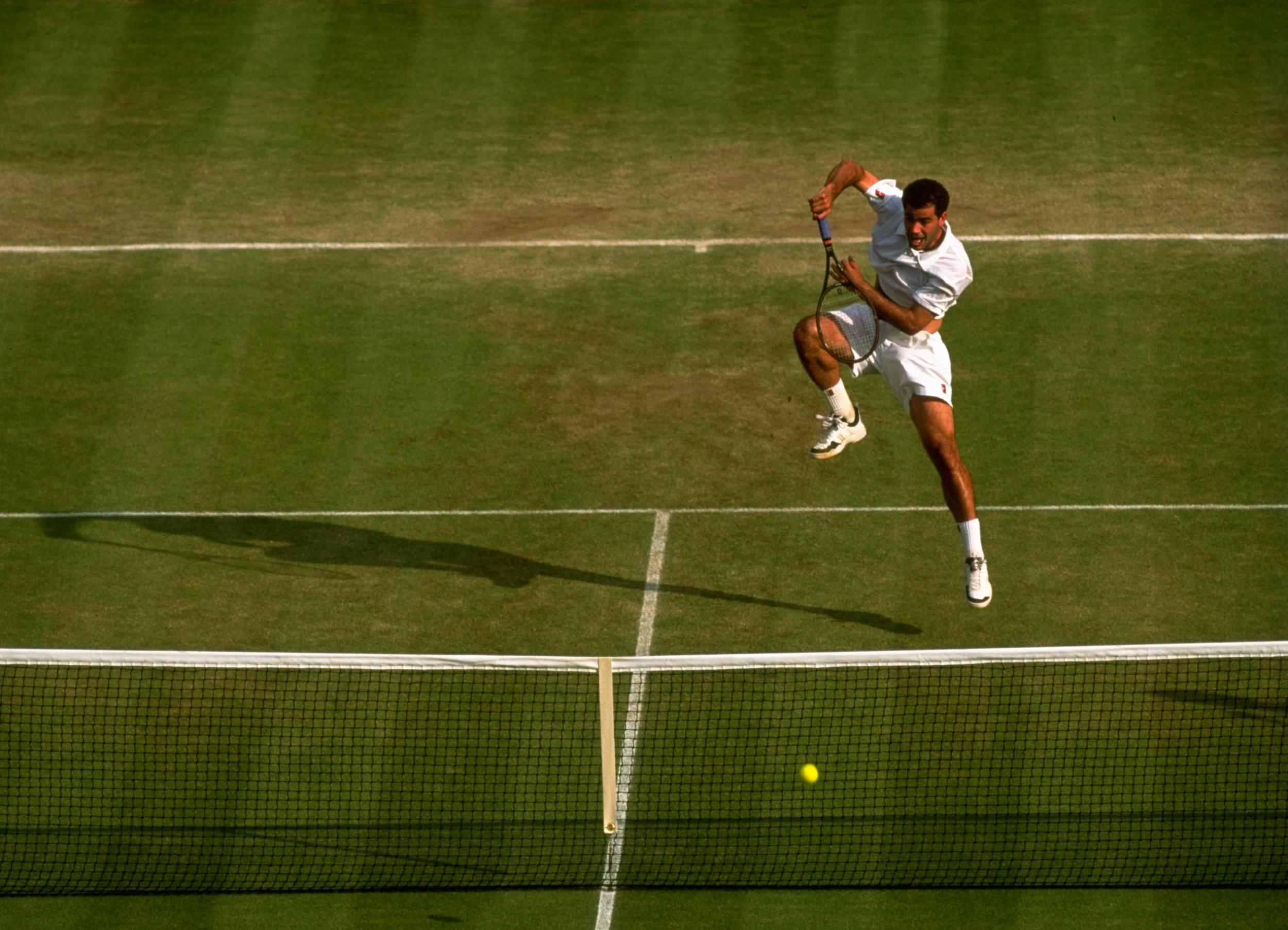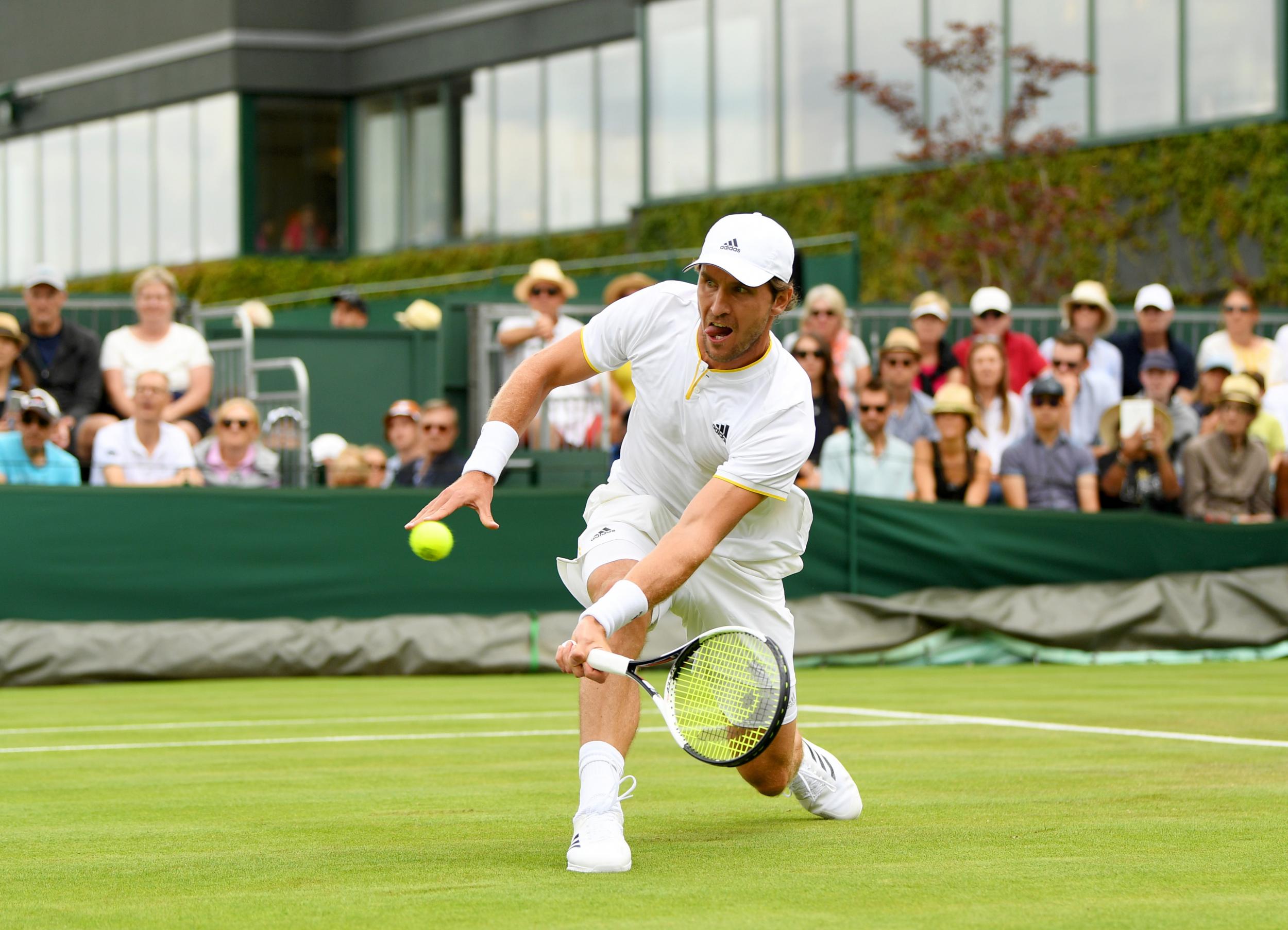Serve-and-volley: the great Wimbledon tradition that is fading into irrelevance
Dustin Brown has complained this week that the Wimbledon courts are slower than at the French Open, making it impossible to play serve-and-volley. Will the style of play ever return to SW19?

Your support helps us to tell the story
From reproductive rights to climate change to Big Tech, The Independent is on the ground when the story is developing. Whether it's investigating the financials of Elon Musk's pro-Trump PAC or producing our latest documentary, 'The A Word', which shines a light on the American women fighting for reproductive rights, we know how important it is to parse out the facts from the messaging.
At such a critical moment in US history, we need reporters on the ground. Your donation allows us to keep sending journalists to speak to both sides of the story.
The Independent is trusted by Americans across the entire political spectrum. And unlike many other quality news outlets, we choose not to lock Americans out of our reporting and analysis with paywalls. We believe quality journalism should be available to everyone, paid for by those who can afford it.
Your support makes all the difference.Serve-and-volley was once as synonymous with Wimbledon as strawberries and cream, or rain breaks and Cliff Richard.
The tactic, which involves quickly approaching the net after hitting a serve, was seen as essential for good grass-court players throughout the eighties and nineties, with the likes of Boris Becker, John McEnroe and Stefan Edberg all particularly accomplished in the art.
Pete Sampras was another to excel at the strategy — and thus excel at Wimbledon. Summer after summer, Sampras would struggle on the slow clay at Roland Garros, before heading to Wimbledon and dominating. He won seven titles in SW19, to set a new Open era record.
But the days of serve-and-volley appear to be a thing of the past. Over the last few years, powerful baseline players have come to dominate in south-west London, with the switch to 100 per cent perennial ryegrass seed in 2001 contributing to the far slower playing surfaces.
And now, the last few remaining serve-and-volleyers fear that the famous playing style is on the verge of disappearing for good.
The eclectic German shotmaker Dustin Brown — who memorably defeated Nadal in 2015 and who will play Andy Murray in the second round on Wednesday — was one of the first to mourn the lost art at this year’s Championships, following his four set win over Portugal's Joao Sousa.

“Every surface has its own characteristics, and Wimbledon and grass courts should be faster,” bemoaned Brown. “I had the feeling even the last couple of tournaments I played that sometimes playing at the French Open might even be a little faster just from the balls and the courts.
“Yeah, that's a little sad. A lot of guys that are attacking and playing serve-and-volley, I think we have seen it over the last couple of weeks also, Feliciano Lopez or Gilles Muller all playing a lot less serve-and-volley.”
Mischa Zverev picked up the theme after his first round match on Tuesday, an impressive 6-4, 6-3, 6-4 win over Bernard Tomic.
Despite the slower surface, Zverev showed that the tactic could still be adopted successfully, as he won 37/42 serve-and-volley points against the Australian — almost 40 per cent of the total number of points he won during the match.
“I think if you serve really well like some people do these days, I think it's still possible to do it,” he said in his post-match press conference, perhaps a little optimistically.

He then added: “But for a serve/volleyer to do really well at a tournament like Wimbledon you need to serve and volley for 36 months straight to get the feel for it, to get the rhythm.
“And that's not very easy to do, because every time you want to serve-and-volley you have to be ready. You either going to get past or you're going to miss an easy volley or you're going to win the points.”
Feliciano Lopez — one of the players singled out by Brown — was another to agree that the tactic had all but disappeared, although stopped short of blaming it all on the slower grass courts.
According to the Spaniard, the latest design of tennis balls and improved fitness levels are also to blame.
“Before, there were 20 or 30 guys playing serve-and-volley,” the 35-year-old said ahead of his first round match. “But in the last 15 years the balls have changed, the courts, generally on Tour, are a little slower and guys are stronger. They hit winners from anywhere.”

However, not everybody is longing for a return to the era of Sampras and the other great serve volleyers, when Wimbledon’s perfectly manicured lawns would first show signs of wear and tear at the net, rather than beyond the baseline.
Nadal, a two-time Wimbledon champion and one of the favourites to win the tournament this year, is one of the most obvious players to benefit from the decline in court speed at The Championships. And the Spaniard was less than impressed when Brown’s comments were put to him after his opening round victory against John Millman.
“It is obvious that if we compare the speed of playing here or playing on Roland Garros, even there is not discussion,” he bristled. “So it is stupid talking about that because is obvious that is completely different sport, and I am not sure if Dustin was talking seriously or not.”
“Stupid” or not, it is difficult to envisage the tactic making a successful return to Wimbledon anytime soon, as the courts continue to slow and powerful baseline players continue to dominate.
The Championships may pride themselves on history and consistency — from the draconian all-white dress code to the strict rules on advertising around the grounds — but serve-and-volley is one tradition that looks unlikely of returning anytime soon.
Join our commenting forum
Join thought-provoking conversations, follow other Independent readers and see their replies
Comments